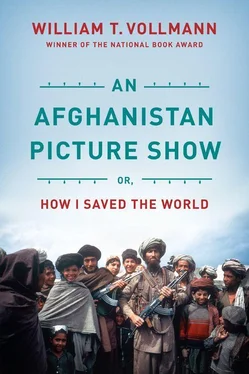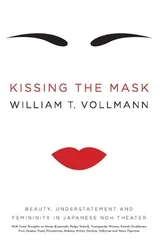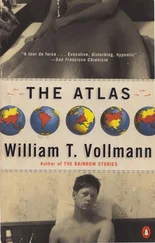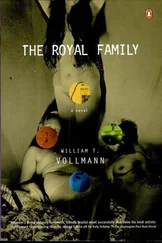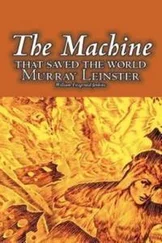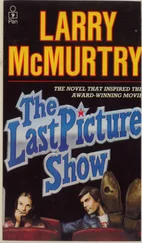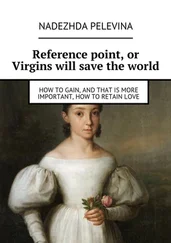1952The Soviets establish a trade office in Kabul. They export enough grain and cement to allow the Afghans to lift rationing on these commodities. Due to continuing unrest, all non-government newspapers are closed. Mr. Hafizullah Amin, a man of considerable ambition, becomes Cultural Officer of the Embassy of the Royal Government of Afghanistan in Washington, D.C. “The future is hidden from us,” says Wittgenstein. “But does the astronomer think like this when he calculates an eclipse of the sun?” *
1953Muhammed Daoud, first cousin of Zaher Shah, becomes Prime Minister of Afghanistan. Daoud requests military aid from the United States and is refused.
1954The U.S.S.R. loans Afghanistan $3.5 million. Pakistan signs a Mutual Security Agreement with the United States. Daoud requests military aid from the United States and is refused.
1955A war almost breaks out over the Pushtunistan question. Pakistan closes the border for five months. Soviet Premier Bulganin says that his country supports Afghanistan’s demands for a plebiscite. The peace-loving democratic peoples of the U.S.S.R. offer the Afghans arms to use against the Pakistanis, and award them a $100 million development loan. Daoud requests military aid from the United States and is refused. Amin joins the staff of U.S.A.I.D. in Kabul. The 1931 Soviet-Afghan Treaty of Neutrality and Non-Aggression is extended for another ten years.
1956The Afghans make “major development agreements” with the Soviet Union. The United States funds a $15 million airport in Kandahar. Amir Sayyid ’Alim Khan, the last ruler of Bokhara, dies in exile. Afghanistan receives $25 million in military aid from the Soviet Union and East Bloc countries. Some of this money is used to construct airfields, which the Soviets will find very convenient in 1979. In reaction to Daoud, the Islamic Movement, the nucleus of the religious Mujahideen factions, is formed by professors in Kabul. Rabbani becomes a member.
1957Women announcers begin working for Radio Afghanistan.
1959During Independence Week celebration, the wives and daughters of the Royal Family and dignitaries appear unveiled. When the mullahs protest to Daoud, he has them thrown in jail.
1961On August 23, Pakistan and Afghanistan break diplomatic relations, and the Pakistan-Afghanistan border is closed. Various skirmishes occur in the N.W.F.P. over the Pushtunistan question.
1962Amin becomes a translator for the U.S. Embassy in Kabul.
1963Prime Minister Daoud resigns (March 9). He is succeeded by the commoner Dr. Muhammed Yousuf. The border with Pakistan is re-opened, and diplomatic relations re-established.
1964A liberalized Islamic constitution is promulgated. Women are given equality under the law. Zaher Shah remains king, but the Royal Family is prohibited from entering politics. (This bars Daoud, for instance, from returning to power, because he is a member of the Royal Family.) The Doshi-Jabal Us-Seraj road is completed between Kabul and the Soviet border.
1965The first national elections are held. (With what ironic sadness does one remember this now!) Political parties appear on the scene: conservatives, centrists, liberals and leftists. In July, the newspaper Khalq ( The Masses ) first appears. Its publisher is a man named Nur Muhammad Taraki, about whom Louis Dupree remarks: “The novel as found in the West is rare in the Middle East and virtually unknown in Afghanistan. One well-known leftist journalist, Nur Muhammad Taraki, is considered to be a budding Persian-language novelist, however.” † Khalq is the organ of the Democratic People’s Party, formed by Taraki on January 1. A more extremist wing of the D.P.P. publishes Parcham ( The Flag ), a magazine to which Mr. Babrak Karmal is a frequent contributor. Babrak calls for the formation of a “United Democratic Front” to achieve socialism by evolution from within the system. (Both wings, Parcham and Khalq, are politically right of a third group within the D.P.P. called Shu’la-yi-Jawed, “the Eternal Flame.”) Babrak and a woman deputy of the D.P.P., Dr. Ananhita, are elected to Parliament. Babrak urges the students to come and demonstrate, which they do with such vigor that Parliament must be adjourned. On October 25, government troops fire on student demonstrators, killing three. On October 29, Mohammad Hashim Mawamdal succeeds Dr. Yousuf as Prime Minister.
The Soviet-Afghan Treaty of Neutrality and Non-Aggression of 1931 is renewed. Meanwhile, U.S. assistance to Afghanistan continues to average $22 million a year.
1966 Khalq is closed by the government.
1967Prime Minister Mawamdal is replaced by Nur Ahmad Etemadi. A split occurs in the D.P.P. between the Khalq and the Parcham (which remains affiliated with the Shu’la-yi-Jawed).
1968The share of socialist countries in the total foreign trade turnover of Afghanistan reaches 47 percent. Some conservative members of Parliament propose that Afghan women be prohibited from studying abroad. A demonstration of Afghan women students makes them change their minds. The Parcham and the Shu’la-yi-Jawed split apart.
1969 Parcham is closed by the government. In a melee in Parliament, Babrak is severely injured and sent to the hospital. His and Ananhita’s terms expire.
1970The magazine Mujalla-i-Shariat ( Shariat Journal ) appears, edited by Professor Rabbani.
1971Pakistan and India go to war. Pakistan loses. As a result, East Pakistan becomes the sovereign state of Bangladesh. In Afghanistan, Dr. Abdul Zahil becomes Prime Minister, and a student strike begins which lasts until 1972.
1972Rabbani becomes head of the Jamiat-i-Islami.
1973Supported by the Parcham and others, Daoud overthrows the monarchy while Zaher Shah is in Italy (July 17). ‡Daoud becomes both President and Prime Minister. He declares martial law. Over the next half-decade he strives to continue the policy of gracious nonalignment, but with increasingly less success. The Soviets improve the border routes of Afghanistan and strengthen the roads between major Afghan cities. Some Cassandras say that the roads are being given a much greater weight capacity than the Afghans require. It is almost as if (ignoble thought!) the roads had been designed to accommodate Soviet tanks. Daoud meanwhile sends 1,600 Parcham cadres to the country to assist in modernization. This effort fails, and many of them leave their posts, convinced that a more radical approach is needed.
On October 20, former Prime Minister Mawamdal, convicted of a plot against Daoud, “commits suicide” in prison.
1975Dissatisfied with what they see as increasingly anti-Islamic tendencies of the government, Gulbuddin et al. begin to build up their own political organizations in the provinces and in Peshawar, where they are given support by Pakistan’s Bhutto government in retaliation for Afghan-supported subversive activities in Pakistan. On the night of July 21–22, religious leaders launch the “Panjsher Insurgency,” which is not limited to Panjsher but includes Paktiya, Jalalabad and many other areas. Ninety-three people are brought to trial, and three executed. In September, a military plot against Daoud is uncovered.
1976Daoud and Bhutto exchange visits.
1977In February, a new constitution is passed, and the country officially becomes the Republic of Afghanistan. In July, the Parcham and the Shu’la-yi-Jawed reunite. General Zia seizes power in Pakistan and arrests Bhutto, who is imprisoned for two years. Zia visits Daoud for consultations in October. In December, another plan for a military coup against Daoud is discovered, and the perpetrators arrested.
Читать дальше
